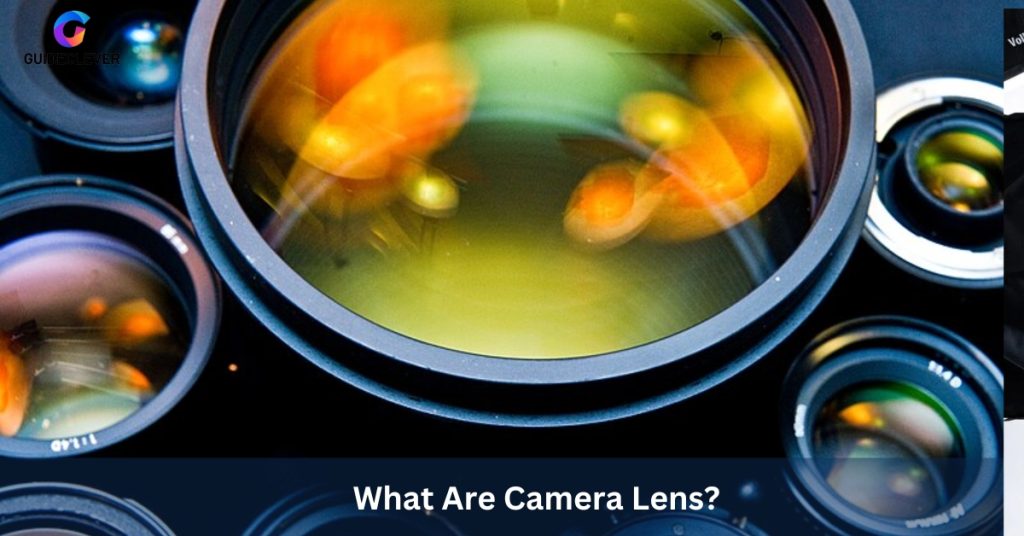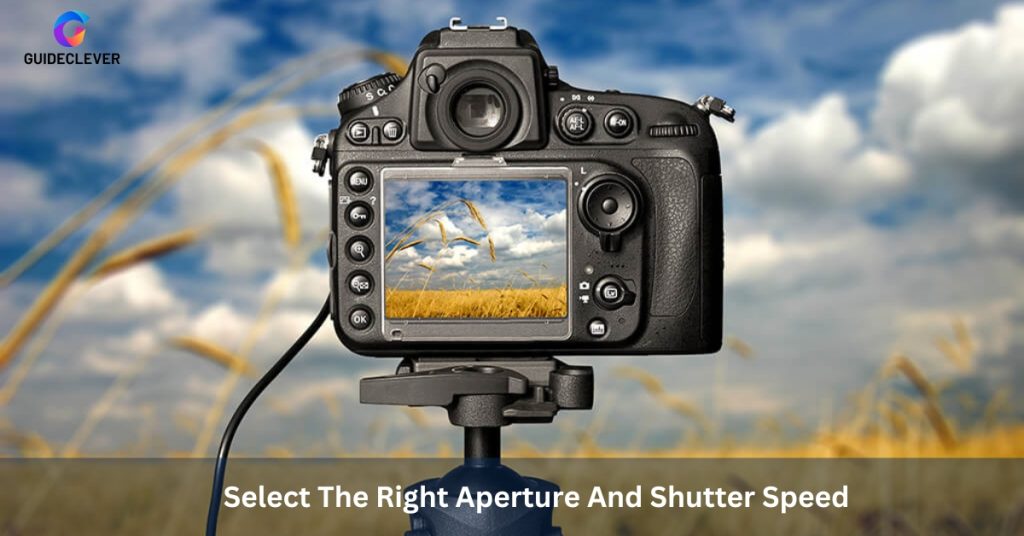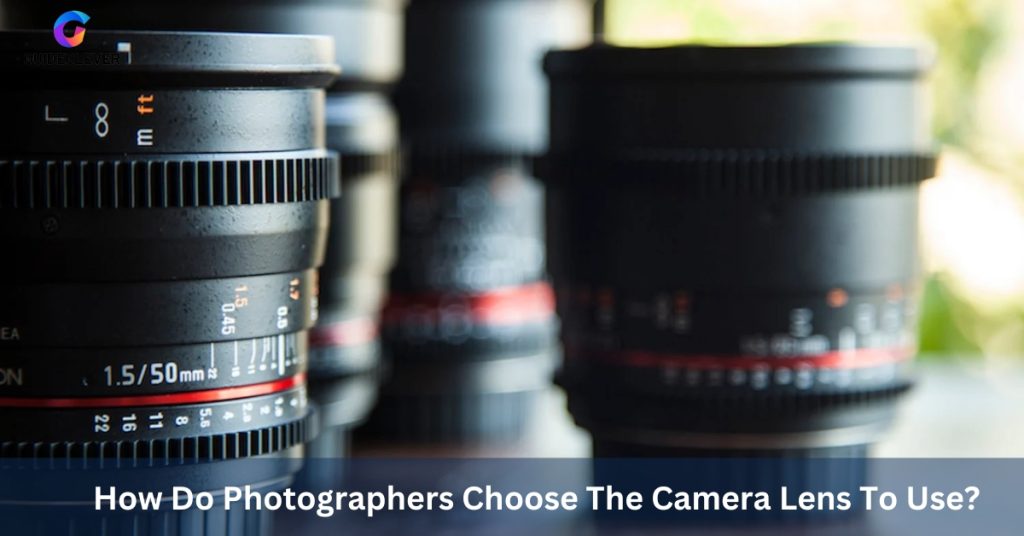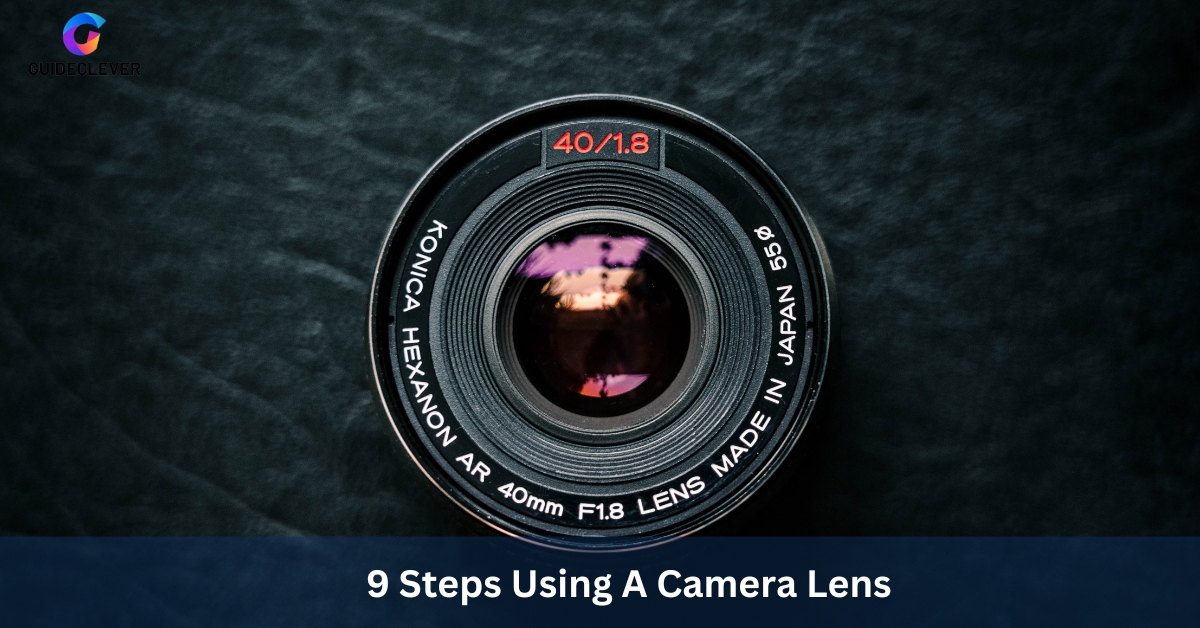A camera lens is an optical device that focuses light onto the camera’s sensor. There are many different types of camera lenses, each with its unique properties. Some lenses are designed for wide-angle shots, while others are designed for telephoto pictures. Some lenses are designed for low-light photography. You should employ specific camera lens methods to achieve the most remarkable results. This guide will cover the basics of using a camera lens. If you’d like to learn more, please read this post.
Contents
What Are Camera Lens?

Camera lenses are optical devices. It gathers and focuses light onto the camera’s light-sensitive sensor. They come in a variety of shapes, sizes, and focal lengths. Each lens has distinct qualities that can alter how a picture appears.
- Wide-angle lenses, instead of standard lenses, capture more of the scene. It has a broader field of view.
- Telephoto lenses are designed to zoom in and capture more distant objects.
- Standard lenses are usually 50mm in focal length. Also, it is suitable for capturing a variety of scenes.
- Macro lenses are used to take up-close pictures of little objects like flowers or insects. It can be used for extreme close-ups.
- Low-light lenses are designed to take pictures in low-light conditions.
- High-resolution lenses are designed to capture more detail in an image than a standard lens would.
- Fish-eye lenses have a vast field of view and can give images a curved, distorted look.
No matter what lens you choose, it’s essential to understand how it works and what type of images it will create.
9 Steps Using A Camera Lens
When using a camera lens, there are certain techniques you should use to get the best results possible. Here are some tips for using your camera lens:
Get Closer To The Subject
When taking a picture, getting close to your subject is essential to capture the details. This will also help you create an interesting composition. It cuts unwanted background elements.
Select The Right Aperture And Shutter Speed

The aperture is the lens’s opening that determines how much light is let in. While the shutter speed determines how much time the camera’s light sensor is exposed to. By changing these parameters, you can adjust the depth of field. (how much of a scene is in focus) and control motion blur or freeze a moving object.
Use A Tripod
Using a tripod can help ensure sharp images with minimal camera shake. It can significantly alter the outcome of a shot.
Use Filters And Accessories
Filters and accessories can help enhance your images. For example, polarizing filters reduce glare and reflections. Other accessories, like lens hoods, can aid in shielding your lens from airborne debris and other hazards.
Try Different Focal Lengths
The amount of a scene that a lens can capture depends on its focal length. It would be best if you experimented with different focal lengths. Find the right one for your desired composition.
Experiment With Depth Of Field
By adjusting the aperture and shutter speed, you can control the depth of field in an image. A shallow lot will blur background elements, while a large area will keep everything focused. Try changing these settings and seeing what kind of effects you get!
Use One Lens Type For A Long Period.
When you first get a lens, practicing with it before switching to something else is essential. The more experience you have with a lens, the better you utilize it. Understand the kind of image it can create.
Use Different Settings Each Time
Each scene and subject requires different settings to get the best results. Don’t be afraid to experiment with different apertures, shutter speeds, ISO and other camera settings for each shot you take. This will enable you to discover more about how your lens works and what images it can produce.
Have Fun With It!
Photography is all about having fun and experimenting with your gear. Take some time to explore different subjects, compositions, lenses, and settings to discover what works best for you. The most important thing is that you enjoy yourself while doing it!
By heeding these recommendations, you ought to be able to master your camera lens and create beautiful photographs. With a bit of practice and experimentation, your photos will show off the best qualities of your gear!
What Are The Things To Check For When Purchasing A Used Camera Lens?
When purchasing a used camera lens, you should check a few things. It ensures a quality product. These include:
Physical damage
Inspect the lens for any signs of physical damage, such as scratches or cracks. If the lens is damaged, it may not work correctly or be dangerous.
Optical quality
Test the lens by taking a few photos to make sure. It produces sharp images with no distortion or other defects.
Functionality
Check to see if all the camera controls and settings work correctly, such as the zoom, focus, and aperture.
Accessories
Ensure all the necessary accessories are included with the lens, such as lens caps and cleaning cloths.
Condition
Also, to physically inspect the lens, you should check its condition. Look for signs of wear and tear or any other issues that could affect performance. A used lens may have been well-maintained and in excellent condition. It may have needed to have been taken care of properly. Before committing to the purchase, it’s essential to check for any signs of damage or wear and tear.
Check these things when buying a used camera lens. You can rest assured that you are getting a quality product.
How Do Photographers Choose The Camera Lens To Use?

Photographers choose the camera lens to use based on a variety of factors. Some common considerations when selecting a lens include:
Focal length
Photographers may want a wide-angle landscape lens depending on the composition or subject. You should use an ultra-telephoto lens for wildlife photography.
Perforation . Photographers will usually choose a lens with a wide maximum aperture to create a greater depth of field.
Image stabilization
Some lenses have a built-in image stabilization feature. It helps to reduce camera shake and blur. This can be extremely helpful when using a telephoto lens for photographing in low light.
Price
Photographers often choose lenses based on budget because some lenses can be expensive.
By considering all these factors, photographers can make an informed decision.
How Do You Know If A Used Camera Or Lens Is Good?
When buying a used camera or lens, there are a few things to remember. If there have ever been any problems with it, try the camera/lens before committing to a purchase. This will allow you to check for any issues and determine if it’s the suitable model for your needs. Additionally, inspect the item for any signs of damage or wear and tear.
You should also ask the seller about the item’s history. Learn how often it was used, if there have been any issues with it in the past, and if it received regular maintenance. It would help if you also inquired about the age of the camera/lens to get an idea of how much life it may have left.
When inspecting the item, look for any:
- Physical damage such as scratches or cracks
- Optical quality by taking a few photos to ensure sharp images with no distortion or defects.
- Functionality of all the camera controls and settings like zoom, focus, and aperture.
- Necessary accessories such as lens caps and cleaning cloths.
By following these steps when purchasing a used camera or lens, you can ensure you get a quality item that will last for many years.
FAQs
How Do You Set Up A Camera Lens?
Setting up a camera lens is relatively simple:
- Attach the lens to your camera body by lining up the mount on the lens with the support on the camera body.
- Use the lens release button (located near the mountain) to unlock and remove any existing lenses.
- Attach the new lens by placing it in the support; turn it counterclockwise until it clicks into position.
- Use the lens release button to lock the lens.
How Do You Attach A Lens To A Camera?
Attaching a lens to a camera is relatively straightforward:
- Ensure that the mount on the lens and support on the camera body are lined up.
- Hold the lens in place and twist it clockwise until it clicks into place.
- Use the lens release button to lock the lens in place.
What Does An 18 To 55mm Lens Mean?
A lens with a focal length range of 18 to 55mm has variable focal length. It can be adjusted from 18mm (wide angle) to 55mm (telephoto). This type of lens is often called a “kit” lens, as it is usually sold with entry-level cameras and is ideal for general photography.
How Do You Use A Manual Camera Lens?
Using a manual camera lens is relatively easy but requires some practice. First, set the aperture by rotating the aperture ring on the lens’s barrel. Next, manually focus your image using the focusing ring on the barrel. Finally, adjust the exposure time by using the shutter speed dial on your camera.
Conclusion
In conclusion, understanding the basics of using a camera lens is essential for capturing high-quality photographs. Different types of lenses have their unique properties. Getting close to your subject is critical to use a camera lens effectively. Select the correct aperture and shutter speed to control the depth of field. Filters and accessories can also enhance your images and protect your lens.



1 thought on “9 Steps Using A Camera Lens – Best New Guide”